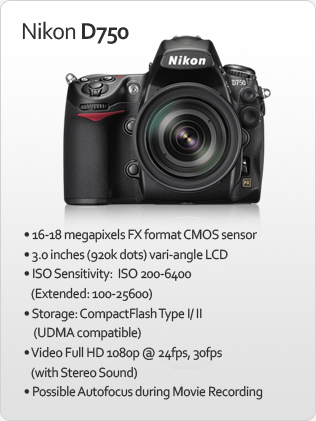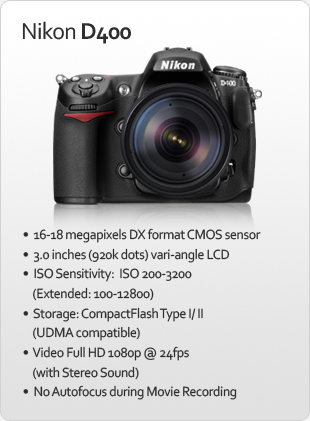
In case you missed it, the Sony HX1 is now available at:
B&H Photo (accepting orders)
Adorama (accepting orders)
Learn more about this awesome point and shoot, megazoom camera in Photography Bay’s Sony HX1 Reviews and Resources.
Digital Camera News, Reviews and Tips
By Eric Reagan

In case you missed it, the Sony HX1 is now available at:
B&H Photo (accepting orders)
Adorama (accepting orders)
Learn more about this awesome point and shoot, megazoom camera in Photography Bay’s Sony HX1 Reviews and Resources.
By Eric Reagan

The Sony A500 is a 12.3-megapixel DSLR, which offers live view functionality and a new Auto HDR mode. The A500 was released simultaneously with the Sony A550. These new cameras sit in Sony’s DSLR lineup between the A380 (as the top-end consumer model) and the A700 as a mid-range prosumer model.
The Sony A500 should be available in October 2009 at an initial retail price of $750. Check availability on Amazon.com.
Equally excellent is the A500’s image quality, with the new 12.3 megapixel CMOS sensor and improved BIONZ processor combining to produce great looking images all the way up to ISO 3200.
The A500 or the A550 would be a fine choice for DSLR novices thanks to the many digicam-style features, but the great versatility and advanced functions make it just as suitable for photo enthusiasts.
Imaging Resource (hands-on review)
My main impression of the new Alphas is that while the bodies are a bit chunky, the user interface has been noticeably improved, and the shooting is quick and easy.
SAN DIEGO, Aug. 27, 2009 – Sony today introduced two ? (alpha) DSLR cameras with a new generation of Exmor™ CMOS sensors and BIONZ™ image processors, which make it easy for active shooters to get the best shot and capture clearer images—without missing their favorite moments.
The ?550 (14.2 megapixels) and ?500 (12.3 megapixels) cameras provide excellent picture quality, particularly in low-light scenarios. A new generation of Sony® Exmor CMOS image sensors employ new low-noise processing for high-quality pictures. The BIONZ image processor has color-noise reduction that helps achieve low noise up to ISO 12800, without sacrificing fine detail.
“We are bringing performance of a higher class of cameras within the reach of a broader group of consumers,” said Mark Weir, senior manager of the Digital Imaging business at Sony Electronics. “Not only do these cameras provide great value, but they also bring faster shooting speeds and new technologies like in-camera High Dynamic Range and new Live View features to mainstream photo enthusiasts.”
With its unique sensor-processor combination, the ?550 camera is the first DSLR in its class with seven frames per second shooting speed for under $1,000. Using the optical viewfinder on both models, you can shoot up to five frames per second and up to four frames per second with Quick Auto Focus Live View. This helps you capture the decisive moment when shooting fast moving subjects like in sports.
These are Sony’s first DSLR cameras that offer an in-camera High Dynamic Range (HDR) feature for capturing highlights and shadows, which processes the image within two seconds. Unlike HDR features in other DSLR cameras, Sony’s unique positional interpolation technology can overcome slight changes in camera position and align individual shots so that a tripod is not required.
The feature handles severe backlighting and other high-contrast scenes like looking out a window into bright daylight. The in-camera auto HDR technology combines the highlight and shadow detail of two separate captures into one remarkably natural looking image.
Because composing shots on the LCD monitor is becoming increasingly important to DSLR users, Sony has equipped these cameras with two Live View functions and a 3-inch (measured diagonally) LCD screen that tilts 90 degrees up or down. The ?500 has a 230,000 pixel Clear Photo LCD Plus™ screen, and the ?550 has a 921,000 pixel Xtra Fine LCD™ display.
Sony’s Quick AF Live View uses two sensors to maintain the same focusing speed as with the optical viewfinder. While the speed of Quick AF Live View is ideal for every day shooting, Manual Focus Check Live View enables critical framing and magnification for setting precise manual focus in macro and tripod shooting. Temporary 7x and 14x zoom views enable you to focus on extremely fine detail while the 1x view shows 100 percent framing in the LCD.
The Quick Auto Focus Live View has been developed with Face Detection technology to help you get the best shot by recognizing and adjusting for faces. It is the world’s first Face Detection system to work with fast, high-precision “phase detection” Auto Focus. By tracking up to eight faces, this system can prioritize auto focus points on a face, and optimize exposure and white balance for beautiful portraits.
These are Sony’s first DSLR cameras that include Smile ShutterTM technology in Live View, which takes the shot when your subject smiles. It works with Quick Auto Focus Live View to capture spontaneous moments.
Image stabilization helps take blur-free shots by compensating for camera shake. Typical DSLR systems build image stabilization into selected lenses only. SteadyShot INSIDE™ image stabilization is built into the camera body itself. Blur will also be reduced with every A-mount lens, including macro and wide aperture standard zoom lenses, with an effect equivalent to shutter speeds faster by 2.5 to 4 stops
To make the benefits of macro photography easier and more accessible, Sony is making available at retail the DT 30mm F/2.8 (model SAL30M28) macro lens. It captures intricate close-ups, which is difficult to achieve with standard lenses and is only compatible with APS-C format DSLRs.
For higher capacity storage with greater connectivity and faster transfer speeds, the new DSLRs are compatible with Sony’s newest 32GB Memory Stick PRO-HG Duo™ HX media. The HX series card is designed to deliver optimal read and write speeds for a growing number of products that require high-bandwidth memory in order to capture and store large data files.
Using the HX series media, Sony ? (alpha) DSLR users can confidently enjoy advanced features such as continuous-shooting photography and realize higher transfer rates of large capacity files to their compatible PC (via supplied USB adapter). For example with the ?550 model, approximately 1500 14-megapixel photos shot in the JPEG+RAW mode can be transferred to a compatible PC in approximately 26 minutes (HX series media sold separately).
The new cameras include dedicated slots for high-capacity Memory Stick PRO Duo™, Memory Stick PRO-HG Duo™, HX series and SD/SDHC media (all sold separately).
The ?550 (model DSLR-A550) and ?500 (model DSLR-A500), which come with the camera body only, will cost about $950 and $750 respectively. The ?550L and ?500L, which come with the camera body and 18-55 kit lens, will cost about $1050 and $850, respectively. The SAL30M28 macro lens will be available for about $200.
By Eric Reagan
Cnet has published a review of the Panasonic Lumix DMC-ZS3.
As long as you don’t want much in the way of manual features, the Panasonic Lumix DMC-ZS3 is a very nice camera that can handle a variety of shooting situations.
For more news and reviews, see Photography Bay’s Panasonic Lumix ZS3 Reviews and Resources.
By Eric Reagan

Photozone.de has posted a review of the Panasonic Lumix G1.
Basically, the Panasonic DMC-G1 is suitable for all kinds of photography but it is limited by the lens options of the system. However, due to the small and lightweight body it is especially attractive for light-weight travel photography so the compromises may still be worth it.
For more news and reviews, visit Photography Bay’s Panasonic Lumix DMC-G1 Reviews and Resources.
By Eric Reagan

DP Interface has posted a review of the Canon PowerShot SX10 IS.
Don’t underestimate the PowerShot SX10 – it’s a great and very capable camera. If you like the SX1 a lot but don’t need its full HD 1080p movie mode and 4 FPS burst mode, then you can get the very similar Canon PowerShot SX10 for a lot less money.
For additional info, see Photography Bay’s Canon SX10 IS Reviews and Resources.
By Eric Reagan

Rumors of the successor to the Canon 1D Mark III persist. The latest word, picked up by Canon Rumors, consists of a number of possible new spec lists, ranging between a 16 and 18 megapixel sensor. While there’s no inherent credibility attached to these spec lists, CR says that they have it on good word that the 1D Mark IV will arrive February 2010. [Read more…]
By Eric Reagan

Here’s new shot of the Pentax mystery-camera – perhaps, the rumored Pentax K30D. It clearly has a pop-up flash and appears to be of the same ilk of the K20D or better.
Check out more from Rice High.
By Eric Reagan

Photo Today has posted a review of the Sony Cyber-shot G3.
The Sony DSC-G3 is a very sharp camera in both its styling and the images it produces. Anyone who selects this camera will be pleased with the numerous features and options it has on board like scrapbooking and music for slide shows.
By Eric Reagan
Here’s a short video from Nikon Austrailia that shows off the new Nikon D5000. More news and reviews on Photography Bay’s Nikon D5000 Reviews and Resources.
By Eric Reagan

Digital Rev has a new, suggestive article entitled The Nikon D400 & D750 Revealed or Just Viral Marketing? While the title would lead you to believe that there’s been some kind of leak or specific promotion on the D400 and/or D750 (neither of which have been confirmed by Nikon), the post appears to simply be Digital Rev’s take on recent rumors, along with some fancy mockups and spec/wish list.
I’ve had several emails to this article, suggesting that it’s a leak of some sort. Upon second glance, it seems to just be a racy title with no evidence of either of these cameras being revealed by Nikon, or evidence of viral marketing on behalf of Nikon. In essence, it appears to simply be speculation.
We’re still waiting for something solid on the Nikon D400, Nikon D750 or Nikon D800. Stay tuned.
